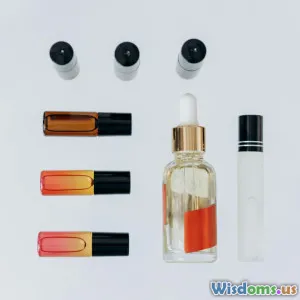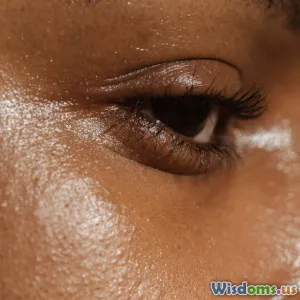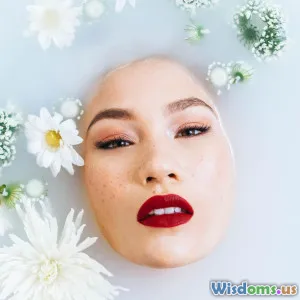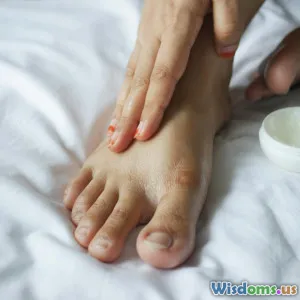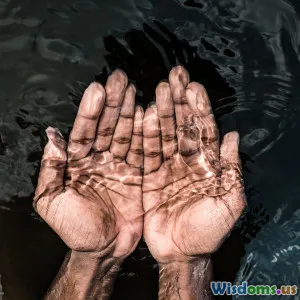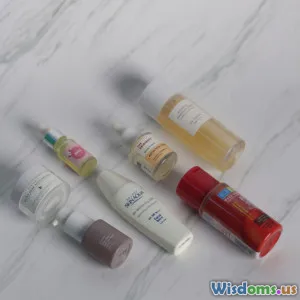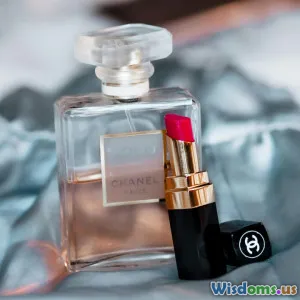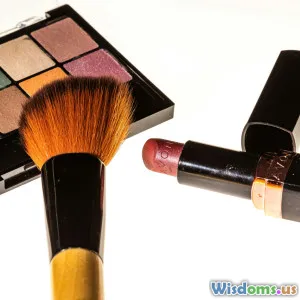
I Tried a Korean Skincare Routine for 30 Days Here’s What Happened
9 min read Discover the transformations and insights from a 30-day Korean skincare routine experiment. (0 Reviews)
I Tried a Korean Skincare Routine for 30 Days — Here’s What Happened
Korean skincare has taken the beauty world by storm, promising radiant, smooth, and healthy skin through meticulous routines and innovative products. As someone intrigued by the hype, I embarked on a 30-day journey to incorporate the quintessential Korean skincare steps into my daily regimen. The goal? To see if the ritualistic approach combined with cutting-edge ingredients could transform my skin.
In this article, I'll walk you through the process, share the challenges and surprises, and reveal the effects observed after a full month. Whether you're skeptical or eager to dive in yourself, this detailed exploration offers insights grounded in real experience.
Understanding the Korean Skincare Philosophy
Before plunging into the routine, it's important to grasp why Korean skincare is unique. Unlike the traditional Western approach, K-beauty emphasizes prevention, hydration, and layering products to build a strong skin barrier.
Dr. Eunyoung Kim, a Seoul-based dermatologist, explains, “Korean skincare focuses on gentle, consistent care, using natural ingredients to maintain skin health before problems arise.” The routine goes beyond cleansing to include toning, treating, moisturizing, and protecting — often involving 7 to 10 steps.
This philosophy intrigued me: treating skincare not as a quick fix but a daily ritual aimed at long-term radiance.
What Does a Typical 30-Day Korean Skincare Routine Look Like?
The core steps I followed each day were:
- Oil-based cleansing: Removes makeup and excess oil without stripping skin.
- Water-based cleansing: Washes away sweat and dirt.
- Exfoliation (2-3 times a week): Using gentle AHA/BHA products.
- Toner: Balances pH and preps skin.
- Essence: Hydrates and aids cell repair.
- Serum/Ampoule: Targets specific concerns (brightening, hydration).
- Sheet mask (2-3 times a week): Intense hydration and nourishment.
- Eye cream: Takes care of delicate under-eye area.
- Moisturizer: Locks in moisture.
- Sunscreen (daytime): Protects from UV damage.
While extensive, each step targets a distinct need. I curated products based on my combination skin, prone to dryness with occasional breakouts.
Week 1: Settling Into the Routine
Initially, the commitment felt overwhelming. Devoting 20-30 minutes morning and night to skincare required adjusting my schedule. I noticed more texture immediately, likely from increased exfoliation and layering unfamiliar ingredients.
An interesting personal insight: double cleansing prevented midday oiliness better than before. Using a mild oil cleanser helped in thoroughly removing traces of makeup and impurities, leaving my skin feeling fresh without tightness — a problem I often experienced with harsher Western cleansers.
A challenge was remembering the sequence. Korean skincare advocates emphasize layering from the thinnest to thickest formula for maximum absorption — a nuance I’d neglected in past routines.
Week 2: Early Visual Changes and Feedback
By week two, I began noticing my complexion looked more luminous, with fine lines around my eyes seeming less pronounced. Closer inspection showed fewer dry patches around my cheeks.
Using hydrating toners and essences twice daily greatly contributed. Korean essences often contain ferment extracts — purported to stimulate skin renewal. According to a study published in the Journal of Cosmetic Dermatology (2017), fermented ingredients enhance skin hydration by over 50% versus controls.
Moreover, incorporating sheet masks during the week elevated moisture levels, making my skin plumper and softer.
Feedback from friends noted a subtle “glow,” which boosted my confidence in the regimen.
However, some mornings my skin felt slightly sticky — likely due to product layering and climate humidity.
Week 3: Addressing Challenges & Adjustments
Not everyone experiences flawless progress, and week three brought clarity on a few obstacles.
Firstly, the increased product use led to occasional breakouts. I realized that layering could clog pores if products are not fully absorbed.
After consulting with a Korean skincare expert online, I modified the routine: pausing sheet masks after breakthroughs and prioritizing non-comedogenic serums.
Additionally, lovingly massaging moisturizer into the skin rather than applying in thick layers improved absorption.
Consistency remained key. Despite temptations to skip steps, maintaining diligence yielded smoother skin texture by week's end.
Week 4: The Transformation Revealed
Approaching day 30, the payoff was clearer.
-I observed minimal redness and irritation compared to my pre-routine skin.
-Complexion exhibited a healthy, natural radiance without relying on makeup.
-Skin felt resilient and supple even after long workdays.
Scientifically, these improvements align with enhanced skin barrier function and hydration from K-beauty ingredients like ceramides, green tea extracts, and snail mucin.
A major takeaway: patience is paramount. Not every product worked instantly, but cumulative care built overall skin health effectively.
Lessons Learned & Tips for Beginners
If you’re considering adopting a Korean skincare routine, here are some distilled insights from my experiment:
- Start slow: Introduce new steps/products gradually to identify possible irritants.
- Focus on hydration: The cornerstone of the routine; well-hydrated skin looks youthful and vibrant.
- Consistency matters more than multitasking: It’s better to do fewer steps regularly than a complex regimen sporadically.
- Use sunscreen religiously: Several Korean products enhance sun sensitivity, making protection essential.
- Listen to your skin: Adapt routines if breakouts or dryness occur — customize to your skin type.
Should You Try It?
The sophistication of Korean skincare is more than marketing buzz — it’s a holistic approach driven by innovative research and centuries-old wisdom on skin nourishment.
For me, the experiment was transformative both visually and educationally. It redefined my attitude to skincare as a self-care act instead of a chore.
That said, routines aren’t universal. What suits combination skin may not work for oily or sensitive types. Consulting with dermatologists and patch testing products remain best practices.
Conclusion: Thirty Days of Glow Worth the Effort
Committing to a 30-day Korean skincare routine revealed the power of thoroughness, patience, and balanced hydration. My skin transitioned from dull and uneven to plump and radiant — confirming that slow, layered care can rival aggressive treatments.
Ultimately, Korean skincare is about respecting your skin’s natural processes. Whether you fully adopt its multi-step format or selectively integrate its products, the underlying message resonates: healthy skin is attainable with mindful attention, quality ingredients, and consistency.
If you’re tempted by K-beauty’s claims, embarking on your own 30-day trial may just be the path to uncovering your personal glow.
References and further reading:
- Journal of Cosmetic Dermatology, 2017: Impact of Fermented Ingredients on Skin Hydration
- Dr. Eunyoung Kim, Dermatologist interview, Seoul, 2023
- The Korean Skincare Manual by Charlotte Cho, 2015
- Consumer Reports on product layering and absorption, 2022
Have you tried Korean skincare? Share your experiences below!
Rate the Post
User Reviews
Popular Posts










